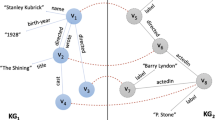Abstract
This paper proposes a new framework that can semantically align the two or more entities in cybersecurity-related Knowledge Graphs (KGs) using an external resource. To do so, we identify four main principles that the external resources must have and then use them to analyze various external resources. The resource is used to find sentences that are needed to understand the usage context of the entities. The entity alignment is performed by semantic embedding with BERT. At this time, semantic embedding is defined as a vector that contains the latent semantic features of the sentences only with similar usage context from the external resource encoded with the language model BERT. To identify the sentences with similar usage context, we first classify the informative entities related to the target entities. Using the informative entities, we generate a set of sentences that have used similar usage context. Finally, to predict semantic relationships (equivalence) between the entities, we employ pre-trained BERT with the set of sentences as input. To prove the superiority of the framework, we perform the experiments to evaluate the accuracy of prediction of equivalence of entities from the different KGs.
Access this chapter
Tax calculation will be finalised at checkout
Purchases are for personal use only
Similar content being viewed by others
References
Li, K., Zhou, H., Tu, Z., Feng, B.: Cskb: a cyber security knowledge base based on knowledge graph. In: Yu, Shui, Mueller, Peter, Qian, Jiangbo (eds.) SPDE 2020. CCIS, vol. 1268, pp. 100–113. Springer, Singapore (2020). https://doi.org/10.1007/978-981-15-9129-7_8
Deng, Y., Zeng, Z., Huang, D.: Neocyberkg: enhancing cybersecurity laboratories with a machine learning-enabled knowledge graph. In: Proceedings of the 26th ACM Conference on Innovation and Technology in Computer Science Education, vol. 1, pp. 310–316 (2021)
Kiesling, E., Ekelhart, A., Kurniawan, K., Ekaputra, F.: The sepses knowledge graph: an integrated resourcefor cybersecurity. In: Ghidini, C., et al. (eds.) ISWC 2019. Lecture Notes in Computer Science, vol 11779, pp. 198–214. Springer, Cham (2019). https://doi.org/10.1007/978-3-030-30796-7_13
Harley, E., Purdy, S., Limiero, M., Lu, T., Mathews, W.: CyGraph: big-data graph analysis for cybersecurity and mission resilience. Technical report, MITRE CORP MCLEAN VA (2018)
Sun, Z., Hu, W., Zhang, Q., Qu, Y.: Bootstrapping entity alignment with knowledge graph embedding. In: IJCAI, vol. 18, pp. 4396–4402 (2018)
Sun, Z., et al.: A benchmarking study of embedding based entity alignment for knowledge graphs. arXiv preprint arXiv:2003.07743 (2020)
Colepicolo, E.: Information reliability for academic research: review and recommendations. New Library World (2015)
Collins Dictionary: Collins English dicfionary and thesaurus (2019)
Ledesma González, O., Merinero‐Rodríguez, R., Pulido‐Fernández, J.I.: Tourist destination development and social network analysis: What does degree centrality contribute? Int. J. Tour. Res. (2021)
Chen, M., Tian, Y., Yang, M., Zaniolo, C.: Multilingual knowledge graph embeddings for cross-lingual knowledge alignment. arXiv preprint arXiv:1611.03954 (2016)
Sun, Z., Hu, W., Li, C.: Cross-lingual entity alignment via joint attribute-preserving embedding. In: d’Amato, C., et al. (eds.) ISWC 2017. LNCS, vol. 10587, pp. 628–644. Springer, Cham (2017). https://doi.org/10.1007/978-3-319-68288-4_37
Trisedya, B.D., Qi, J., Zhang, R.: Entity alignment between knowledge graphs using attribute embeddings. In: Proceedings of the AAAI Conference on Artificial Intelligence, vol. 33, pp. 297–304 (2019)
Zhang, Q., Sun, Z., Hu, W., Chen, M., Guo, L., Qu, Y.: Multi-view knowledge graph embedding for entity alignment. arXiv preprint arXiv:1906.02390 (2019)
Bahl, L.R., Jelinek, F., Mercer, R.L.: A maximum likelihood approach to continuous speech recognition. IEEE Trans. Pattern Anal. Mach. Intell. 2, 179–190 (1983)
Marino, J.B., et al.: N-gram-based machine translation. Comput. Linguist. 32(4), 527–549 (2006)
Peters, M.E., et al.: Deep contextualized word representations. arXiv preprint arXiv:1802.05365 (2018)
Devlin, J., Chang, M.-W., Lee, K., Toutanova, K.: BERT: pre-training of deep bidirectional transformers for language understanding. arXiv preprint arXiv:1810.04805 (2018)
Mozafari, M., Farahbakhsh, R., Crespi, N.: A bert-based transfer learning approach for hate speech detection in online social media. In: Cherifi, H., Gaito, S., Mendes, J.F., Moro, E., Rocha, L.M. (eds.) COMPLEX NETWORKS 2019. SCI, vol. 881, pp. 928–940. Springer, Cham (2020). https://doi.org/10.1007/978-3-030-36687-2_77
Zhao, L., Li, L., Zheng, X., Zhang, J.: A BERT based sentiment analysis and key entity detection approach for online financial texts. In: 2021 IEEE 24th International Conference on Computer Supported Cooperative Work in Design (CSCWD), pp. 1233–1238. IEEE (2021)
Xue, K., Zhou, Y., Ma, Z., Ruan, T., Zhang, H., He, P.: Fine-tuning BERT for joint entity and relation extraction in Chinese medical text. In: 2019 IEEE International Conference on Bioinformatics and Biomedicine (BIBM), pp. 892–897. IEEE (2019)
Acknowledgements
This research is supported by C2 integrating and interfacing technologies laboratory of Agency for Defense Development (UE201114ED).
Author information
Authors and Affiliations
Corresponding author
Editor information
Editors and Affiliations
Rights and permissions
Copyright information
© 2022 Springer Nature Singapore Pte Ltd.
About this paper
Cite this paper
Kim, M., Kim, H., Park, G., Sohn, M. (2022). Semantic Embedding-Based Entity Alignment for Cybersecurity Knowledge Graphs. In: You, I., Kim, H., Youn, TY., Palmieri, F., Kotenko, I. (eds) Mobile Internet Security. MobiSec 2021. Communications in Computer and Information Science, vol 1544. Springer, Singapore. https://doi.org/10.1007/978-981-16-9576-6_5
Download citation
DOI: https://doi.org/10.1007/978-981-16-9576-6_5
Published:
Publisher Name: Springer, Singapore
Print ISBN: 978-981-16-9575-9
Online ISBN: 978-981-16-9576-6
eBook Packages: Computer ScienceComputer Science (R0)




